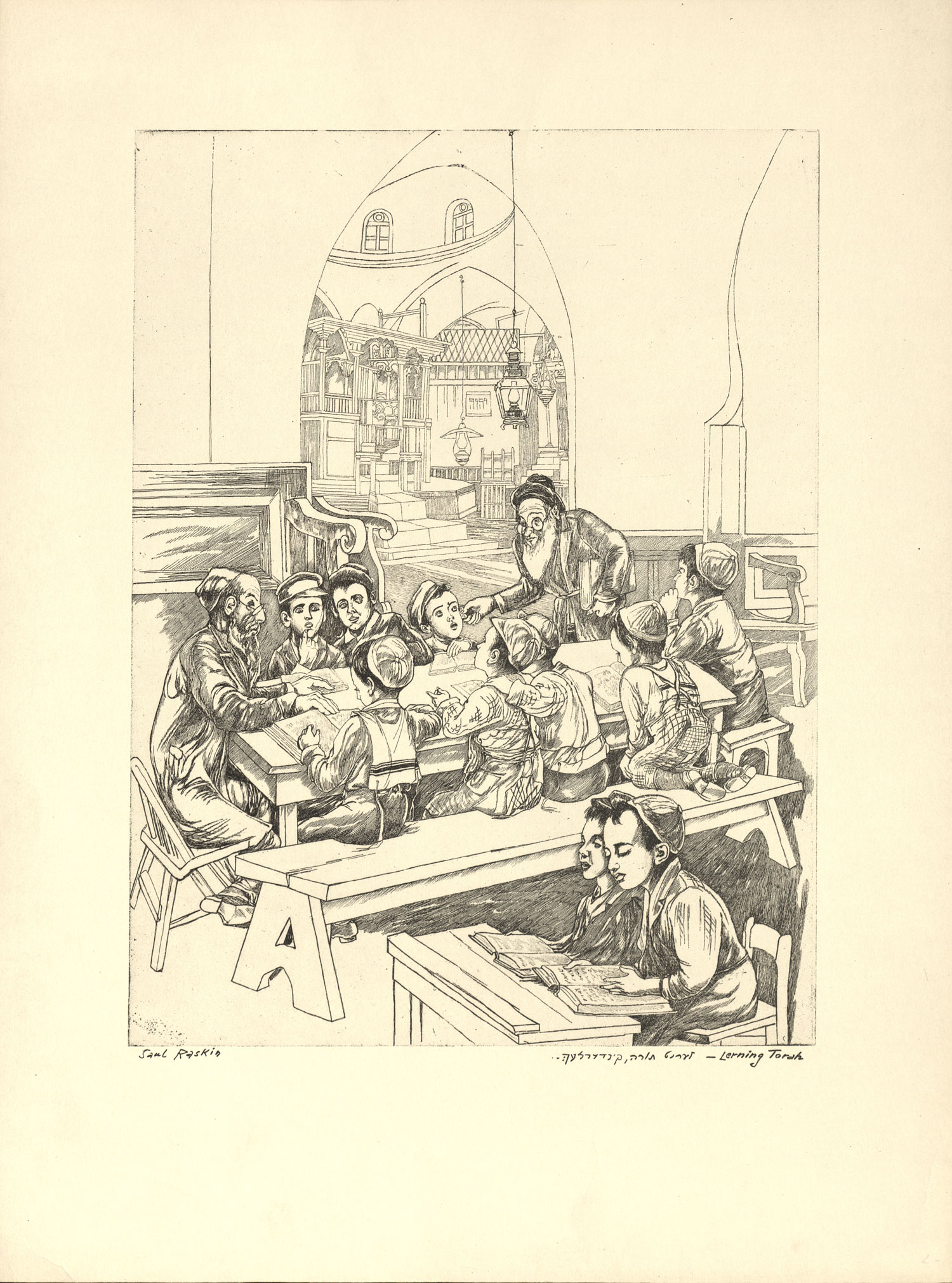Saul Raskin (1878–1966) was a Russian-born American artist known as a prolific illustrator of Jewish themes. Among his hundreds of drawings and prints, many were set in Palestine. This one of children learning Torah includes a scene similar to those of East European cheders, but Raskin has set the “schoolroom” in Jerusalem’s Istanbuli synagogue, the interior of which can be seen in a lighter line in the background. This image, included in Raskin’s illustrated Book of Psalms published in 1942, predates the synagogue’s destruction in the 1948 Israel-Arab War. By setting a traditional Eastern European cheder scene in an actual Palestinian synagogue, Raskin seems to be making the case for religious Zionism through an optimistic presentation of future East European Jewish learning in Palestine. Assuming the print was made near the time of the publication of the Book of Psalms in 1942, news of the fate of the Jews in Europe would have made this a compelling idea.
Mark A. Raider credits Raskin, who spent extensive time in Palestine, with reinforcing a “romantic treatment” of life in Palestine through “his well-known paintings, sketches, and lithographs of Jewish life in the Yishuv [which] were exhibited around the country, re-printed in the Anglo Jewish press, and widely acclaimed by art critics.” The cheder scene is part of a larger theme that runs through Raskin’s work, popularizing images of life in Palestine as a desirable reality to diaspora Jews. By placing the cheder in the synagogue, the artist reinforces the idea that education is at the core of religious life.
